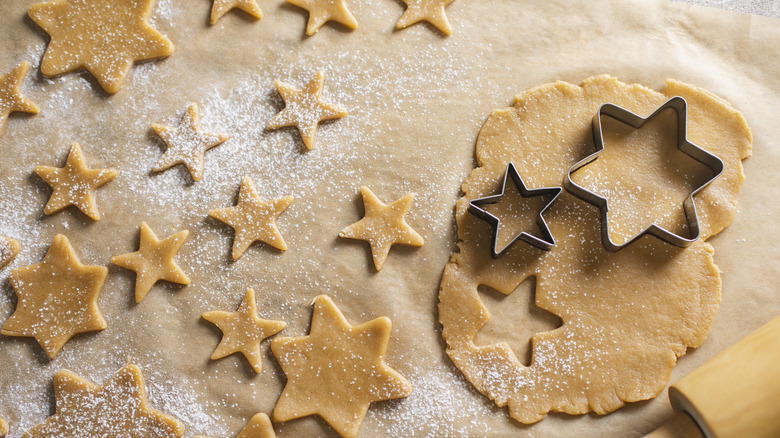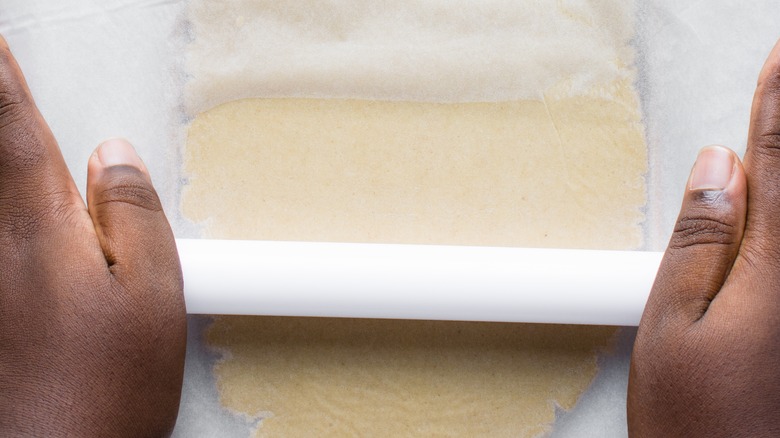Avoid Overworked Cookie Dough By Rolling It Between Parchment Paper
The best cookie recipes have a high proportion of fat to flour, which results in the characteristic crumbly, light and melt-in-the-mouth texture of gingersnaps and custard creams. But if you've followed the recipe perfectly and your finished cookies are tough instead of scrumptiously short, you might be overworking your dough during the rolling stage. To eliminate this problem, try sandwiching your dough between two sheets of parchment paper and rolling it out in a single batch without dusting the counter with extra flour as you traditionally would.
Simply cut two pieces of parchment paper that are large enough to cover your baking sheet and set them on the counter. Once you've mixed your cookie dough together you can either wrap and chill it in the fridge first, which will make it easier to roll out later, or immediately place it between the two sheets of paper, roll it out fully and refrigerate it afterwards. The greaseproof nature of the parchment paper, which is coated in food-safe silicone (depending on the brand), will allow you to roll out the dough effortlessly without it sticking while creating a clean barrier between the mixture and the counter. If you find that the paper is moving around on your worktop, place a cloth underneath it to hold it in place. Once chilled, you can remove the top sheet and cut out your cookies with your cutter, remembering to dip them in flour first for crisper edges.
Why does overworking the dough make cookies tough?
Sprinkling the counter with extra flour and rolling the same piece of cookie dough over and over again between each dusting creates dense, tough cookies that have a chalky texture. This is because rolling the mixture repeatedly with more flour increases the development of a protein called gluten in the dough. Baked goods with a higher gluten content trap air bubbles that harden as they are heated, which is how high-rise breads that have been kneaded for a long period keep their lofty shape once baked. However, an excess amount of gluten isn't warranted in cookie dough because the final texture of your snickerdoodles and shortbread is supposed to be tender and crumbly rather than firmly structured.
Rolling your dough between sheets of parchment paper means you won't need to add any more flour to the original mixture, guaranteeing that your cookies stay true to the ratios of your recipe. It also means you can transfer all of your cut-out cookies straight onto your baking sheet in one move instead of peeling them off one by one and laying them on your baking tray individually (remove the scraps around them before putting them in the oven). This perk is particularly useful if your cookie dough is very tender and soft or your shapes are small and tricky to handle.

